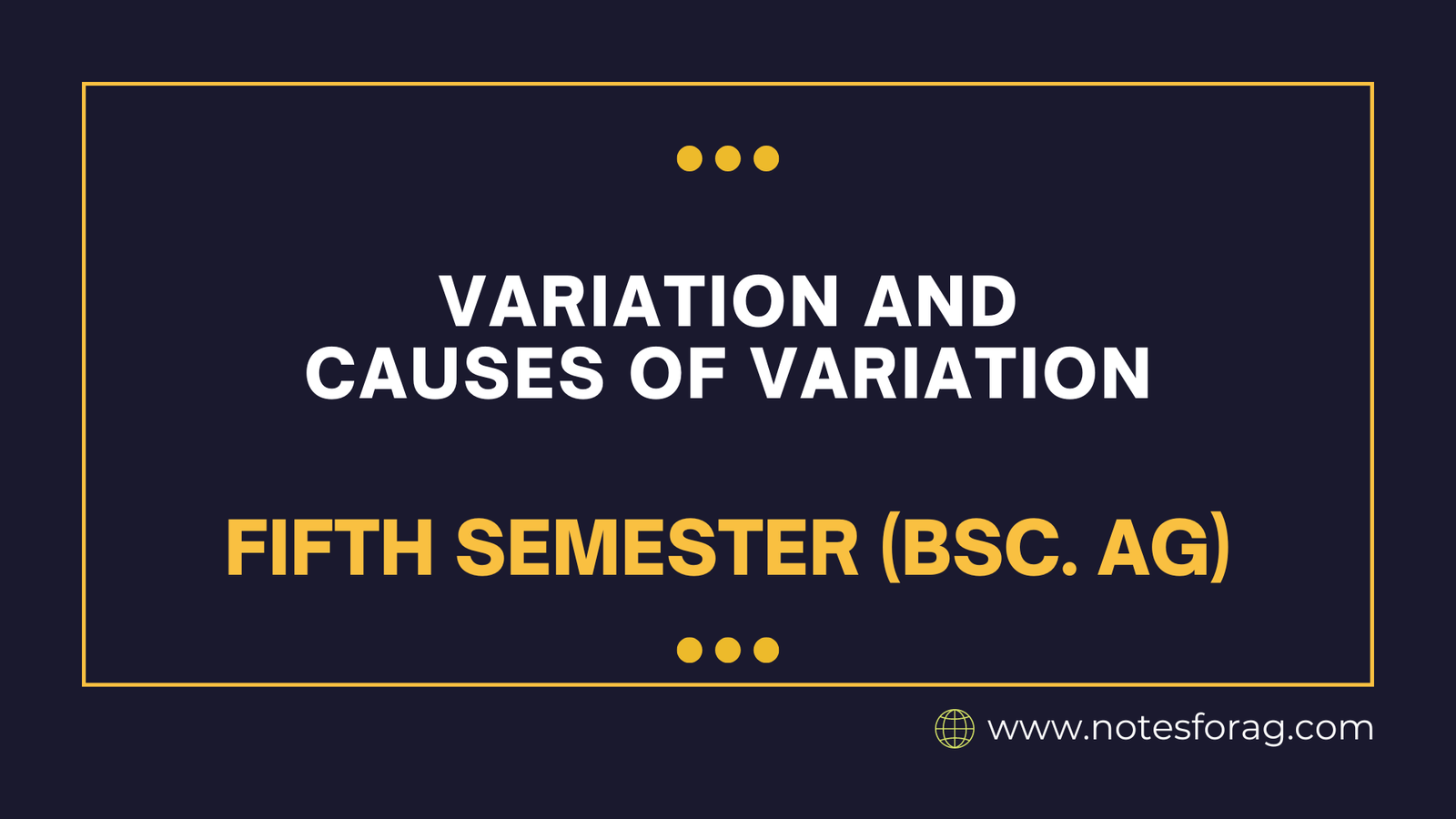Variation refers to differences in features across individuals within a species, such as size, color, or behavior. It can be produced by genetic factors like as mutations and recombination during reproduction, as well as environmental impacts such as temperature and diet. These modifications can be continuous (displaying a range) or discontinuous (different categories). They are critical to evolution because they supply the raw material for natural selection to act on, allowing species to adapt and thrive in changing circumstances.
Table of Contents
Introduction to Variation
It refers to the differences seen in a given set of data or observations. Understanding variance is essential for evaluating results and making educated decisions in a variety of domains, including statistics, biology, and quality control. In statistics,it quantifies how much a set of values deviates from the average or mean value. It is a metric that allows analysts to evaluate the dependability and consistency of data, ensuring that the conclusions generated from it are both legitimate and relevant.
In biology, it refers to the differences between individuals within a population caused by genetic, environmental, and developmental variables. This variety can drive evolutionary processes, impacting natural selection by making certain features more favorable in particular situations.
Types
It refers to differences between items, measurements, or observations that can occur in a number of settings. There are two major types: random and systematic variation. Understanding these categories is critical for both academics and practitioners, as each influences results in unique ways.
1. Random Variation
It is defined as the unpredictable and intrinsic fluctuations that occur in measurements or phenomena, which can be accounted for but not completely controlled.
- Refers to unforeseeable, accidental changes that occur spontaneously and influence data or attributes.
- These variances occur without any discernible pattern and are not driven by any single factor.
- Example: Differences in plant height caused by tiny, uncontrollable causes such as slight variations in sunshine or water.
2. Systematic Variation:
It occurs when there are consistent, recognizable impacts on outcomes.
- Variations that occur consistently and predictably as a result of specific variables.
- These deviations are frequently attributed to established causes or experimental situations.
- Example: Crop output varies owing to soil quality or fertilizer application.
Lastly, distinguishing between random and systematic is critical for making sound decisions about study design, analysis, and implementation. A good understanding of these types can improve the accuracy and consistency of results in a variety of industries.
Causes of Variation
Variation in data sets or biological systems can result from a range of internal and external causes. Understanding these reasons is critical for correctly evaluating results and reaching meaningful conclusions.
- Mutations: Random mutations in DNA can result in the emergence of new characteristics.
- Recombination: During sexual reproduction, genes are jumbled, creating new genetic combinations.
- Gene flow: Migration allows genes to spread between groups.
- Environmental Factors: Climate, food availability, and chemical exposure all have the potential to alter characteristics.
- Natural Selection: Some differences increase survival or reproduction, so those features grow more frequent over time.
Strategies and Best Practices
It is critical in industries such as manufacturing, research, and healthcare since it helps to preserve consistency and enhance quality. Here are some important tactics and excellent practices:
1. Standardization:
- Using consistent procedures, methods, and protocols to reduce variability.
- Example: Standardizing manufacturing procedures to achieve consistency in product quality.
2. Control Charts and SPC (Statistical Process Control):
- Control charts are used to monitor processes and detect both random and regular deviations.
- Identifies and corrects deviations before they cause serious difficulties.
3. Root Cause Analysis:
- Identifying and resolving the root causes of systematic variance.
- Example: Conducting a detailed study of equipment failure or environmental issues that impact product quality.
4. Training and Education:
- Ensure that employees are trained to follow processes and handle variances efficiently.
- Well-informed teams are better able to eliminate human error, a typical source of variation.
5. Environmental Controls:
- Minimizing environmental elements that can generate random variation, such as maintaining regular temperature, humidity, and cleanliness in manufacturing or research settings.
6. Feedback Loops and Auditing:
- Data collection, auditing, and feedback are all done on a regular basis in order to continuously refine procedures and minimize deviations.
7. Continuous Improvement (Kaizen):
- Regularly assessing procedures and applying modest adjustments to reduce variation and improve long-term performance.
- Example: Adopting lean manufacturing strategies to reduce waste and increase process efficiency.
Understanding the types and causes of variation is critical for properly adopting these techniques. By combining knowledge of variety with practical approaches, practitioners can create comprehensive solutions that are tailored to their individual setting. Finally, using these best practices will improve productivity, product quality, and general reliability across multiple industries.
Frequently Asked Questions
What is variation?
Variation refers to the differences in characteristics, such as physical qualities or behaviors, between members of the same species. These disparities can be attributed to hereditary causes, environmental influences, or a combination of the two.
What causes genetic variation?
It is primarily caused by:
Mutations: Random alterations in DNA.
Recombination: Sexual reproduction causes gene shuffles.
Gene flow: Migration allows genes to spread between groups.
Related Articles

